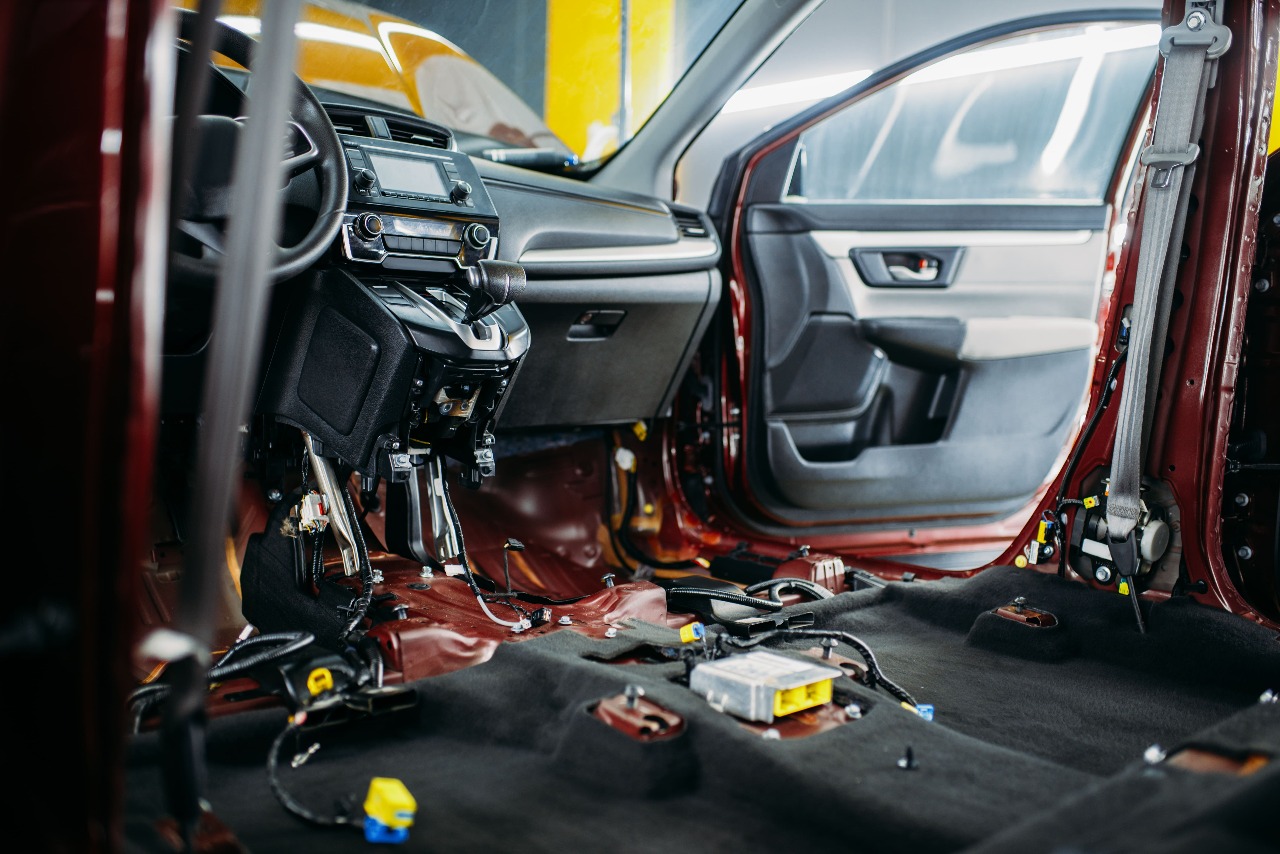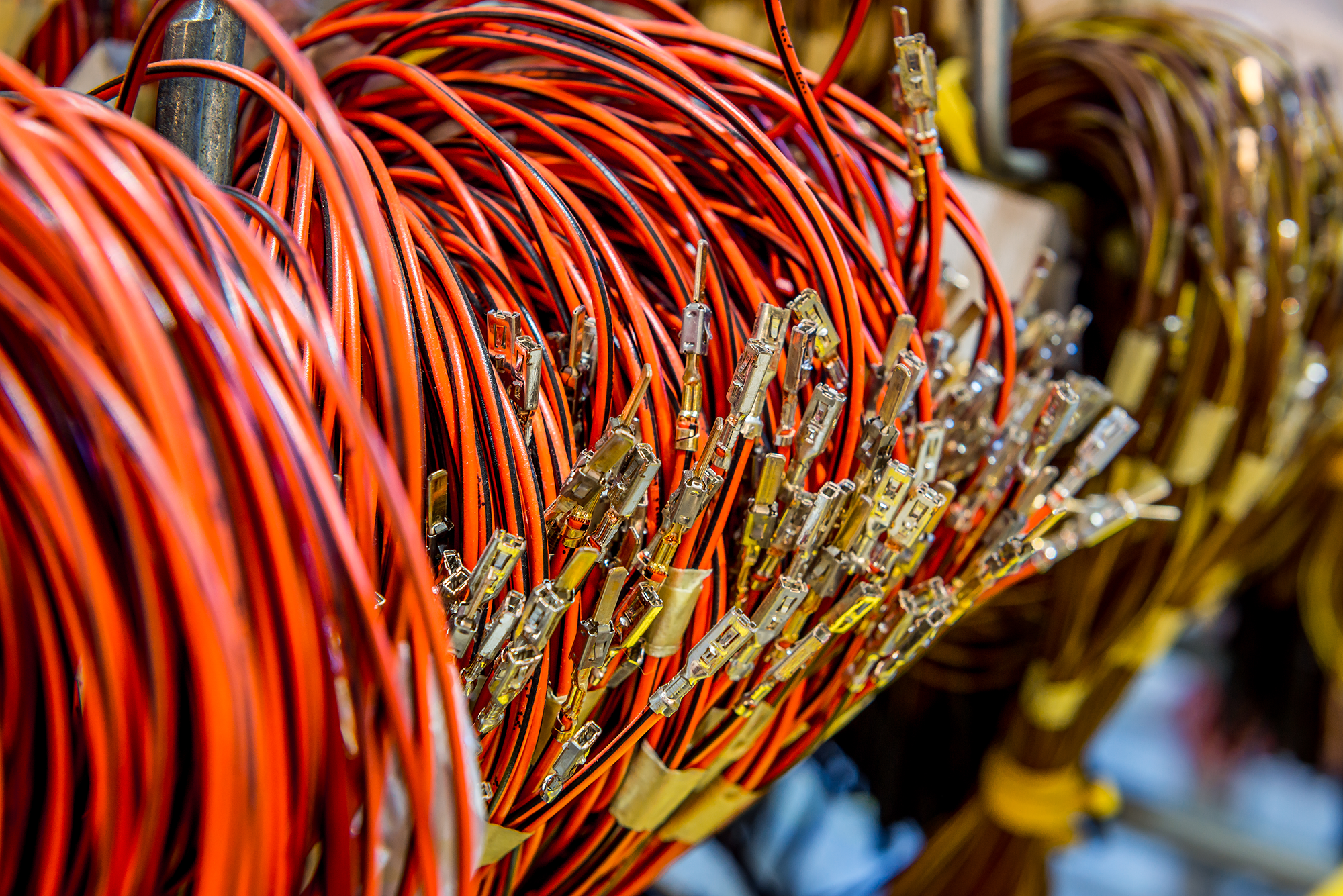What is Wire Harness: Essential Electrical Systems

In today's complex technology world, wire harnesses are key. They connect and power many electrical parts across different fields. Known also as cable or wiring harnesses, these are collections of wires or cables. They send signals or power in a system.
These cable assemblies are vital for smooth working and efficiency. They are used in the automotive, aviation, and industrial sectors.
Key Takeaways
- Wire harnesses are crucial for connecting and powering electrical parts in various industries.
- They are made up of wires or cables that send signals or power within a system.
- Wire harnesses help with efficient integration and functionality in fields like automotive, aviation, and industrial manufacturing.
- It's important to know about wire harnesses, their parts, and how they work for designing and making electrical systems.
- The making of wire harnesses needs careful planning and detail to ensure they work well and last long.
Understanding the Basics of Wire Harnesses
Wire harnesses are key in many electrical and electronic systems. They make it easier to send power and signals around complex devices. A wire harness is basically a group of wires, cables, and connectors put together and placed in certain spots in a system.
Definition and Purpose of Wire Harnesses
The definition of a wire harness is simple. It's a bunch of wires, cables, and connectors all in one unit. The purpose is to make electrical systems easier to install and maintain. It does this by putting many wires into one easy-to-handle piece.
Components of a Wire Harness
A wire harness has several important parts:
- Wires: These carry electrical signals and power.
- Connectors: These let the wire harness connect with other parts.
- Terminals: These are the ends of wires that connect to connectors.
- Protective Coverings: These protect the wires and cables from harm or interference.
These parts are put together in a way that makes a wire harness structure. This structure meets the electrical system's needs.
| Component | Description |
|---|---|
| Wires | Conductors that carry electrical signals and power |
| Connectors | Termination points that allow the wire harness to interface with other components |
| Terminals | Crimped or soldered ends of the wires that connect to the connectors |
| Protective Coverings | Insulation, shielding, and other materials that protect the wires and cables |
"Wire harnesses are the unsung heroes of electrical systems, providing the essential connections that power our modern world."
What is Wire Harness
A wire harness, also known as a cable harness or wiring harness, is a bundle of electrical wires and connectors. It's designed to carry electrical signals and power in a system. These assemblies are used in many areas, like cars, planes, and even home gadgets. They make it easier to manage electrical parts and connections.
The definition of a wire harness is simple: it's wires and cables tied together. They're often held in place with tape or sleeves. The purpose of a wire harness is to keep these connections safe and tidy in a device or system.
Wire harnesses are crucial in today's electronics and machines. They keep things neat, reduce mess, and make systems work better. By grouping wires together, they make electrical parts more efficient and organized. This is why they're key in many products we use daily.
| Key Features of a Wire Harness | Benefits of Using a Wire Harness |
|---|---|
|
|
"Wire harnesses are the unsung heroes of modern electronics, quietly and efficiently keeping our devices and machines running smoothly."
Applications of Wire Harnesses
Wire harnesses are key parts used in many industries. They are found in cars, planes, industrial gear, and even in gadgets we use at home. The car industry uses them the most.
Automotive Wire Harnesses
Car wire harnesses connect and power all the car's electrical parts. This includes everything from the lights and dashboard to the engine and entertainment system. They are made to last in tough car conditions, ensuring they work well and keep us safe.
Wire harnesses are also big in the aviation world. They manage the complex electrical connections in planes. Industrial machines and factory systems use them too, to keep their electrical systems tidy.
Wire harnesses are crucial for many consumer electronics. They help organize the wires in things like home appliances and personal gadgets.
"Wire harnesses are the unsung heroes of modern technology, seamlessly integrating electrical systems and enabling the smooth operation of a wide range of applications."
Design and Manufacturing of Wire Harnesses
Making a reliable wire harness is a detailed process. It's key for many electrical systems, like in cars and machines. Let's look at the steps in wire harness design and wire harness manufacturing. This will show how these important parts are made.
The wire harness design starts with a deep look at what's needed. Engineers think about how many wires are required, where they should go, and what connectors to use. They also consider the environment and how the harness must perform. This careful planning makes sure the harness works well in the system.
After designing, the wire harness manufacturing begins. This involves cutting, stripping, and putting the wires together. They also attach connectors and terminals. Sometimes, extra protection is added to keep the wire harness materials safe and working right.
| Wire Harness Design Considerations | Wire Harness Manufacturing Stages |
|---|---|
|
|
By carefully designing and making wire harnesses, engineers make sure they work well in their places. This helps many electrical systems run smoothly and reliably.
"The design and manufacturing of wire harnesses is a delicate balance of precision, functionality, and durability, ensuring these critical components perform flawlessly in a variety of applications."
Conclusion
Wire harnesses are key to modern electrical systems. They ensure everything works well in many areas, like cars, planes, and industrial gear. As technology gets better, wire harnesses will become even more important.
Wire harnesses make things safer and easier to maintain. They keep electrical cables tidy, reducing the chance of short circuits and fires. This makes the systems they support safer and more reliable.
The future looks bright for wire harnesses, with new materials and smart tech on the horizon. As we need more complex and efficient electrical systems, wire harnesses will play a bigger role. They will drive innovation and change how we use electrical devices every day.
FAQ
What is a wire harness?
A wire harness, also known as a cable harness or wiring harness, is a set of electrical cables or wires. They transmit signals or electrical power in a system. These assemblies are key in powering and connecting electrical parts in many areas, like cars, planes, industrial gear, and gadgets.
What are the main components of a wire harness?
A wire harness has wires, connectors, terminals, and protective coverings. These parts are put together and placed in certain spots in the system. They make it easy to install and keep up with the wires, cables, and connectors.
What are the different applications of wire harnesses?
Wire harnesses are used in many places, especially in the car industry. They connect and power all the electrical parts in a car, like headlights, the dashboard, the engine control unit, and the entertainment system. They also have big roles in aviation, industrial gear, and consumer electronics, managing the complex electrical connections.
How are wire harnesses designed and manufactured?
Designing and making wire harnesses requires careful planning to meet the application's needs. The design looks at the wires' number and type, their path, connectors, and terminals, and any special requirements. Making them involves cutting, stripping, and putting the wires together, attaching connectors and terminals, and adding protective coverings or shielding.
What is the future of wire harnesses?
As technology gets better, wire harnesses will become more important. New materials, designs, and manufacturing methods will improve their performance and abilities. Wire harnesses are vital in modern electrical systems, making it easy to send power and signals across many applications. Their role will likely grow in the future.






